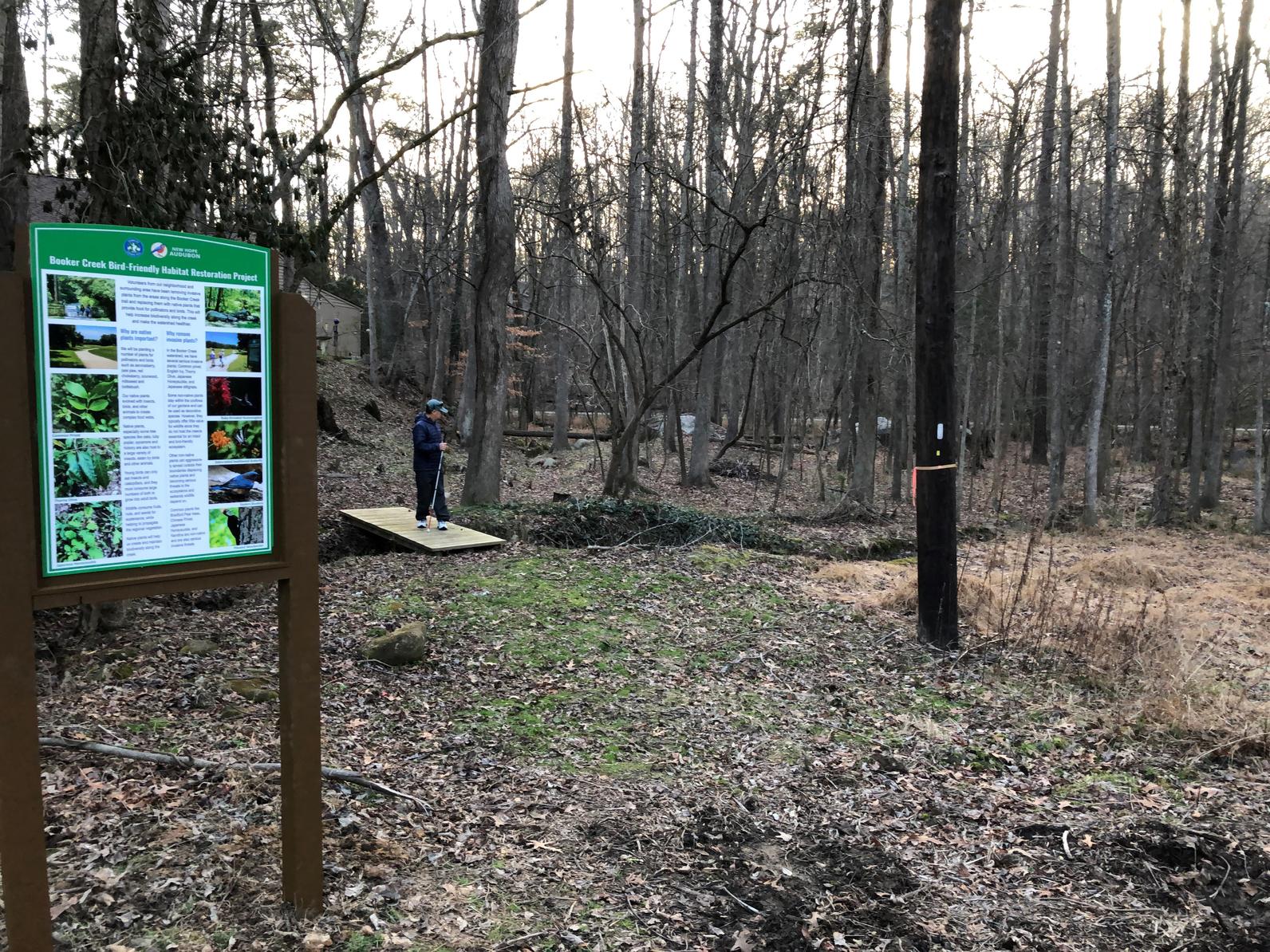The following blog post was written by Barbara Driscoll, New Hope Audubon Society president.
For years I have walked the Lower Booker Creek trail in Chapel Hill as part of my daily routine. As I walked, I dreamed of having the resources to remove all the invasive privet that came to block all the undergrowth along the trail.
One day, I noticed that someone had cleared a large section of privet, and then more was cleared the next month. Signs were posted that this was a neighborhood volunteer activity. I decided to contact the person in charge of volunteers, Jeanette Bench, and found a partner in crime. Never underestimate the power of the few.
Jeanette, along with Michael Everhart as part of the Chapel Hill Parks and Rec Committee, began working with the town on the adopt-a-trail program in 2018. Chapel Hill has numerous trails that are in floodplains or border creeks, and many of these riparian areas are infested with invasive plants such as Privet, Japanese Stilt Grass, Elaeagnus, and Japanese honeysuckle.
Each month from September to May volunteers have been showing up once a month to cut and remove mounds of Privet, Elaeagnus, Japanese Honeysuckle and other invasive plants. Parks and Rec removes the piles of plants after the workdays and also supplies the tools for the volunteers.
Now that a large amount of invasive plant material was removed, it was the perfect opportunity to plant native shrubs and trees in the open spaces along the creek. I decided to apply for a Plants for Birds Burke Grant from National Audubon. The Coleman and Susan Burke Center for Native Plants has generously been providing funding for native plants projects for several years.
Actively removing invasive species and replanting with natives has a myriad of benefits over time: creating diverse and nutritious habitat for birds, pollinators and other wildlife; augmenting stormwater retention and groundwater recharge; facilitating nutrient and pollutant sequestration resulting in improved water quality downstream; and improving trail visibility, safety, access, and connections.
In addition to funding native plants, we wanted to use the grant to provide signage to create public awareness and broader understanding about the problem of invasive plants, as well as greater understanding about the benefits of incorporating bird-friendly native plants into people’s yards. This trail is heavily used by residents (averaging 10,000 visits monthly based on Chapel Hill’s foot traffic measurement).

One of the most rewarding parts of this project has been the thank you notes that Jeanette receives from the students who have helped. These are just a few of the notes received:
“I was one of the volunteers which attended the full time of the Booker Creek restoration. I would like to thank you for giving this chance for us students and the community alike to get a hands on experience with the process. I believe that this does not only help the environment near Booker Creek but also gives a chance for people to find out more about why the environment is the way it is and how they could help. This event sparked a strong interest in the environment in many of my friends who also attended the event. For that I would like to thank you.”
“I am writing to thank you for the opportunity to help out this weekend at Booker Creek. The opportunity to beautify the creek with fun and interesting people while helping the environment by clearing out invasive species was truly the most enjoyable school-related experience this year. I look forward to working with you in the future.”



